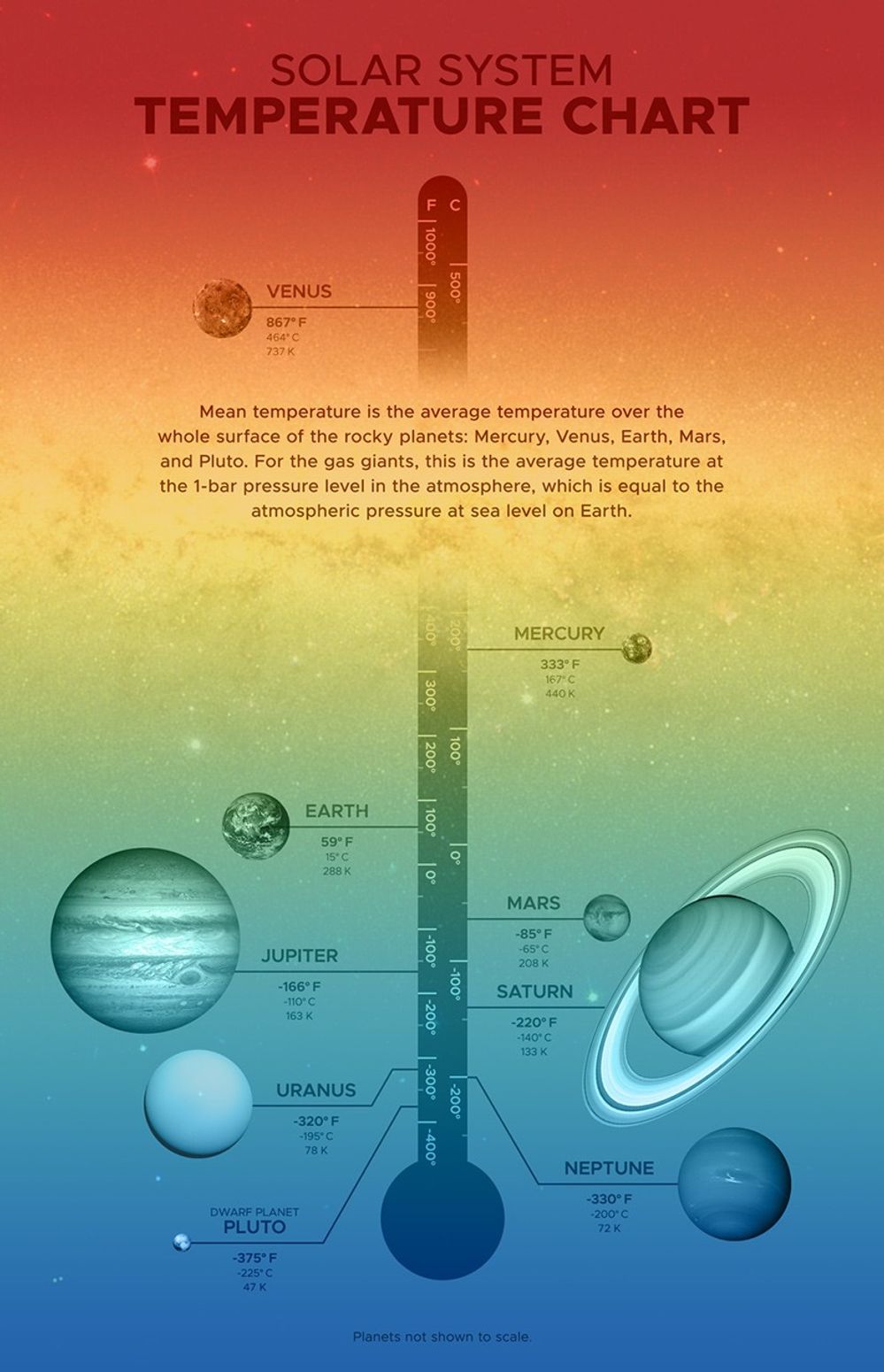Solar System Temperatures
| Credit | NASA Planetary Fact Sheet |
|---|---|
| Language |
|
Solar System Temperatures: Mean Temperatures on Each Planet
Planetary surface temperatures tend to get colder the farther a planet is from the Sun. Venus is the exception, as its proximity to the Sun, and its dense atmosphere make it our solar system's hottest planet. The mean temperatures of planets in our solar system are:
- Mercury: 333°F (167°C)
- Venus: 867°F (464°C)
- Earth: 59°F (15°C)
- Mars: Minus 85°F (-65°C)
- Jupiter: Minus 166°F (-110°C)
- Saturn: Minus 220°F (-140°C)
- Uranus: Minus 320°F (-195°C)
- Neptune: Minus 330°F (-200°C)
- Dwarf Planet Pluto: Minus 375°F (-225°C)
This graphic shows the mean temperatures of various destinations in our solar system. (Planets not to scale.)
In general, the surface temperatures of planets decrease with increasing distance from the Sun. Venus is an exception because its dense atmosphere acts as a greenhouse and heats the surface to above the melting point of lead.
Mercury rotates slowly and has a thin atmosphere, and consequently, the night-side temperature can be more than 1,000 degrees Fahrenheit lower than the day-side temperature. It can be as cold as -290°F (-179°C) on Mercury at night.
Temperatures for the gas and ice giants (Jupiter, Saturn, Uranus, and Neptune) are taken from a level in the atmosphere equal in pressure to sea level on Earth.




























